Subphylum Vertebrata Suborder Serpentes Rank Species | Phylum Chordata Family Viperidae Higher classification Sistrurus | |
 | ||
Lower classifications Sistrurus miliarius barbouri, Sistrurus miliarius streckeri | ||
Sistrurus miliarius is a venomous pit viper species found in the southeastern United States. Three subspecies are currently recognized including the nominate subspecies described here.
Contents
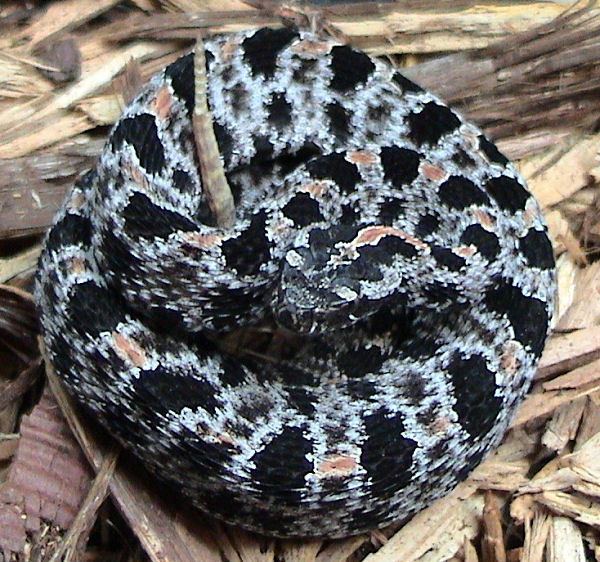
Description
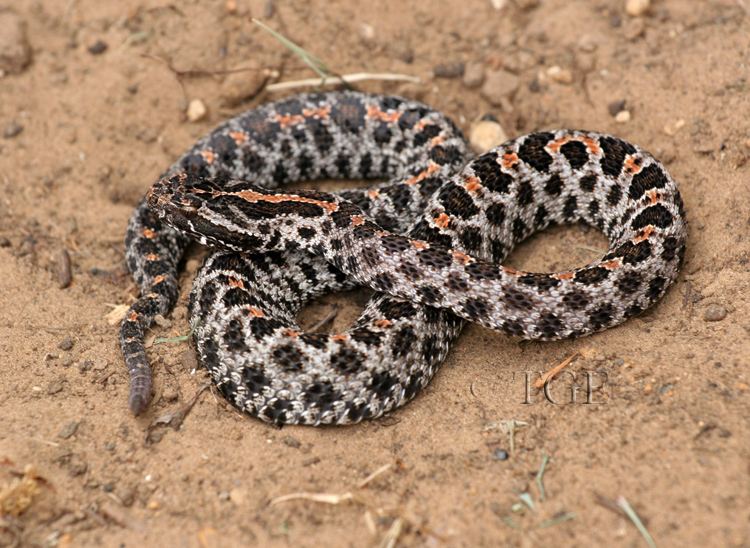
A small species with adults usually growing to 40–60 cm (16–24 in) in length. Maximum reported length are 78.8 cm (31.0 in) (Klauber, 1972). Snellings and Collins (1997) reported a specimen of S. m. barbouri measuring 80.3 cm (31.6 in), but it had been in captivity for over 12 years. The largest S. m. barbouri reported by Gloyd (1940) was a specimen measuring 63.8 cm (25.1 in) from St. Petersburg, Florida. Shine (1978) suggested that in some populations males may be larger than females, but a later study by Bishop et al. (1996) did not find sexual dimorphism of any kind in a population in Volusia County, Florida.
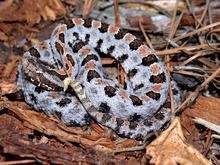
The midbody rows of dorsal scales usually number 23. The dorsal pattern consists of a series of oval or subcircular spots with reasonably regular edges. The spots on the flanks are mostly round and not much higher than they are wide. Belly pigmentation towards the rear is more limited to indistinct blotches found on pairs of adjacent scales. Juveniles have a color pattern that is similar to the adults, although it may be paler or more vividly marked, and the tip of the tail is yellow.
Common names
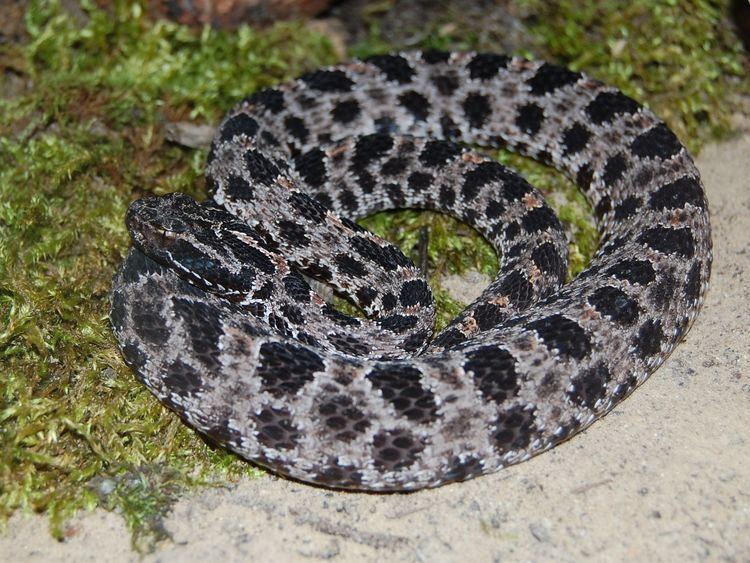
Bastard rattlesnake, nipple snake, Carolina ground rattlesnake, brick red rattlesnake, Carolina pygmy rattlesnake, Catesby's small snake, dwarf rattlesnake, eastern pygmy rattlesnake, grey rattlesnake, ground rattler (Garman, 1887), ground rattlesnake, hog-nosed rattlesnake, little rattlesnake, miliar(y) rattlesnake, North American smaller rattlesnake, oak-leaf rattler, pygmy ground rattlesnake, pygmy rattlesnake, small rattlesnake, southeastern ground rattlesnake, southern ground rattlesnake, southern pygmy rattlesnake, spotted rattler, spotted rattlesnake, southern rattlesnake.
Geographic range

Found in the southeastern United States from southern and eastern North Carolina, south through peninsular Florida and west to eastern Texas and Oklahoma. The type locality given is "Carolina." Schmidt (1953) proposed that this be restricted to "Charleston, South Carolina."
Habitat
This species reportedly inhabits flatwoods, sandhills, mixed forests, floodplains, and is also found near lakes and marshes.
Conservation status
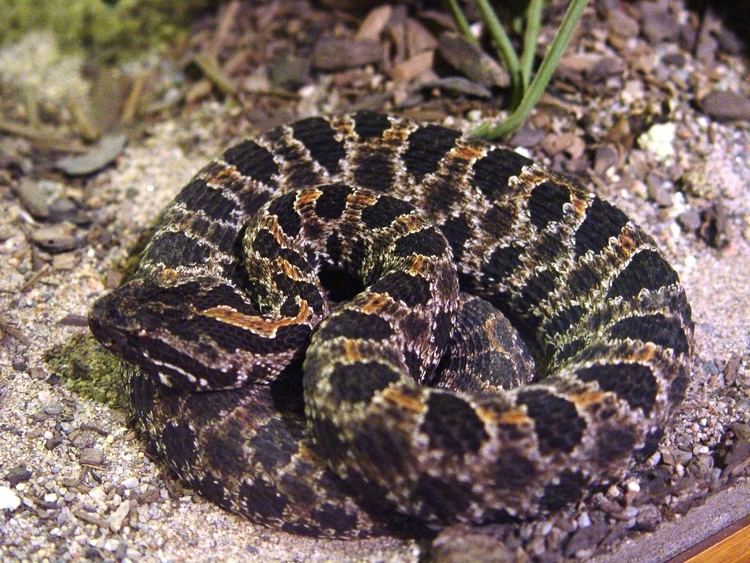
This species is classified as Least Concern (LC) on the IUCN Red List of Threatened Species (v3.1, 2001). Species are listed as such due to their wide distribution, presumed large population, or because it is unlikely to be declining fast enough to qualify for listing in a more threatened category. The population trend is stable. Year assessed: 2007.
Behavior
Usually seen in the summer sunning themselves or crossing the road later in the day. The tiny rattle makes a buzzing sound that can only be heard from a few feet. Some individuals are very aggressive and will strike furiously, while others seem lethargic and do not even attempt to rattle. They do not dig their own burrows, but rather use those dug by small rodents or gopher tortoises (Gopherus polyphemus).
Feeding
Its diet includes small mammals and birds, lizards, insects and frogs, as well as other snakes.
Venom
Since this species is unable to produce much venom, it is unlikely that it is able to deliver a fatal bite to a human adult. Brimley (1942) wrote that although it was too small to be really dangerous, its bite "will give the victim quite an unpleasant time for several days." However, bites involving children have resulted in prolonged hospitalization and there are also reports of necrosis.
These snakes produce cytotoxic venom that is strongly hemorrhagic and tissue toxic, but devoid of any neurotoxins (Ernst, 1992; Van Mierop, 1976). The venom was basis for the development of the drug eptifibatide which is used to prevent clotting during a heart attack. The venom is somewhat different in that it contains substantial amounts of serotonin and related tryptamine compounds (Welsh, 1967). Antivenin does not appear to be effective in the treatment of these bites, although CroFab does seem to do a better job than ACP, at least in some animal models. (Consroe et al., 1995).
